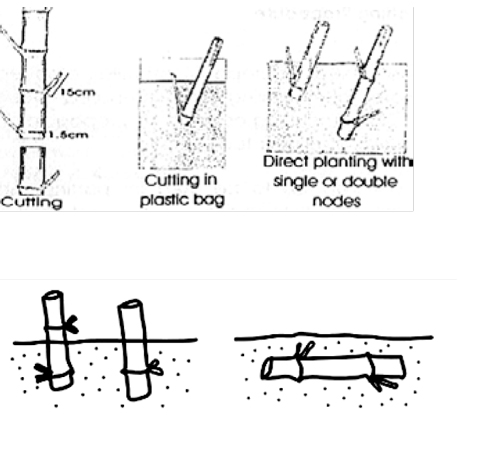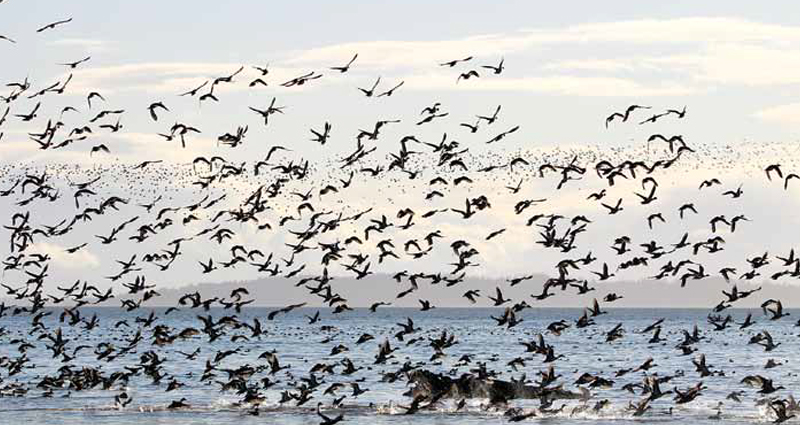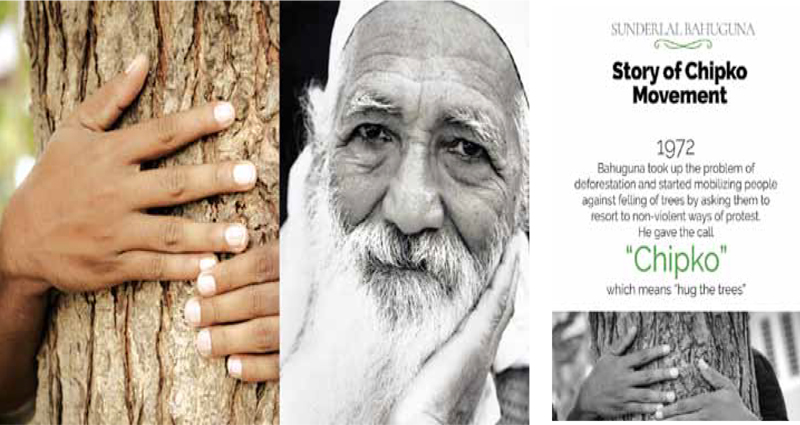
By: Dr. Yogesh Y. Sumthane
Bamboo Propagation Techniques
Introduction: with the gradual increase of demand of timber species to meet the present requirements, there is a tremendous pressure on raw material in the last few decades and people are forced to look forward for the search of nontimber forest product to substitute the wood. In this process during later part of the last century bamboo has emerged as a material for the ecological, economic and social upliftment, because of its ability to grow in the wasteland, amazing growth rate, high yield and multiple uses. They are now considered as world’s greatest natural and renewable vegetable resources, which may be considered as cash crop to generate income needs for the rural communities. To meet the growing demand, there is a need for quality planting
stock to enhance productivity and large scale commercial cultivation. Therefore, an ideal nursery as per requisite to fulfil the demand of planting materials for large scale plantations. Bamboo can be propagated through seeds, stem, roots, and rhizome vegetative means.
Creation of Nursery:
Nursery has to be started early in the month of Feb-March so that plants can be ready for planting during rainy season. Propagules, cuttings or offsets, need to be collected in Feb-March just before the emergence of new culms. Offsets should be maintained in soil filled gunny bags till planting in the field. Polypot nursery of seed origin should also be started during this period of time. To establish a new nursery, necessary care must be taken as following :
Site and Accessibility:
The area for establishment of Nursery should be nearer to the road or near the planting site and free from logged conditions.
Soil: Soil should be sandy loam and well drained
Shade: Provision of natural or artificial shade should be made.
Protection: The nursery area should be protected through fencing/live fence/cattle trench etc.
Preparation of Nursery bed:
The size of the nursery depends on scale of Activity, Plant material, propagation methods, species to be propagated. The size of nursery bed is with a width of 1.2 m, length of 8-10 m and 15 cm raised bed. The beds should be levelled to ensure that seeds or plant material are not washed away into gullies. A space of 0.5 m should be provided in between two nursery beds. The bed should be of Soil, Sand & FYM mixture in the 2:1:1 ratio.

Propagation with seeds:
Seeds should be collected from selected superior clump and viability can be tested chemically by TTZ (Tetrazolium) test. Seed fallen on the ground should preferably be avoided. However, big matured seeds, which fall on ground may be picked up and planted in the poly bag directly. Keep the seeds into cold water for 1-2 days and discard the floating seeds. Seeds may be sown in line in germination beds and cover it by a thin layer of fine soil. Pricking out the seedling should be carried out at the four leaf stage. Plant the pricked out seedlings in multiplication bed keeping space 20cm x 20 cm or in the polybags. Watering must be provided regularly depending on prevailing weather conditions. The seedlings are ready for macro proliferation after 4 months. While transplanting, care must be taken that roots are well placed inside the poly bags and soil is compacted up to the collar regions.
Propagation through rhizome/offset:
This is one of most popular traditional method of bamboo propagation. The rhizomes/offset may be separated from mother clump just before the emergence of new culms. Collection time is very crucial for subsequent survival of rhizome/ offset. Once the new shoot emerges, the survival percentage reduces drastically. The best time of collection of rhizome/ offset is during the period of March to early part of May.
- The age of the culm is not more than 2 years.
- Cut the selected culm with a sharp instrument keeping two prominent nodes.
- Dig out soil around from the selected rhizome and detach it from the mother clump at the neck portion with sharp instrument, so the buds are not
damaged. - Wrap up the rhizome with roots with a wet gunny bag and cut end should be covered with a plastic sheet or paint it
to prevent drying. - The rhizome may be planted directly in the field in a pit of size 50 x 50 x 50 cm fortified dug out soil with FYM and chemical fertilizer.
- The rhizome can also kept in nursery for some time by putting in a soil filled gunny bag.
- Dip the rhizome with roots into 0.1% Bavistin solution before planting.
- Plant the rhizome vertically or in slightly in a slanting position, cover with soil, compact it and mulching around it.
Propagation through culm cuttings:
Three main factors are responsible for propagation through culm cuttings viz. season of culm collection, age of the culms and root growth hormones. The best time for the preparation of cuttings
is March- April. Generally, healthy, disease free clump should be selected either from homestead garden or from natural forests. 1.5 to 2 years old culm should be cut with sharp instrument leaving only the lower most nodes.
- Discard the upper thin portion of the culm.
- The culm should be shifted immediately to the nursery site and cut into 2 nodded or single nodded cutting keeping 10 cm on the either side.
- Trim the branches keeping only one node and care should be taken not to damage the dormant buds.
- Drill two holes in the centre of internodes and pour 200 ml hormonal solution i.e. 200 ppm IBA, (2 gms. Indole Butyric Acid in 10 litre water) to the culm cavity, close the hole
by wrapping polythene strip or by cellophane tape. - In case of solid bamboo or thick walled bamboo dip the cuttings into hormonal solution for 24 hours.
- Dip cut ends before placing in the nursery beds in 0.1% Bavistin solution (1 gm 1 litre water).
- Place the cuttings with soil in such a way that the cuttings are just below the soil.
- Cover the cuttings with soil in such a way that the cuttings are just below the soil.
- Regular irrigation should be done twice in a day upto 21 days and later on daily once or depends on prevailing climatic condition.
Propagation through branch cuttings:
Some of the thick walled bamboo species viz. Bambusabalcooa, B. bambos, D. strictus, D. Hamiltoni, D. asper etc having very stout primary branches and such branches can also be used as planting material. In this case many branches may be obtained from a single clump without damaging the mother clump. However, in case of bamboos having thin branches are
not suitable for this process.
- Select pre-rooted branches from 1.5-2 year healthy and disease free mother clump from natural forest or from the homestead garden.
- Cut the branches with the rhizomatous swelling along with the aerial roots with the help of hacksaw during March to May.
- Make two nodded branch cutting with the basal swelling. Transport the cuttings immediately to the nursery by wrapping with wet gunny bag.
- Dip the cuttings in hormonal solution for 24 hr.
- Seal the cut end with wax to prevent water loss
- Dip in 0.1% Bavistin solution before planting.
- Plant the cuttings vertically in raised beds or polybags such way that the rhizomatous swelling and a lower node remains under the soil.
- Regular watering is done twice for three weeks and once daily afterwards.
- Keep the cuttings under shade.
- Root development takes place after 30-65 days and gradually new shoots appear and will be ready for planting after six months.




